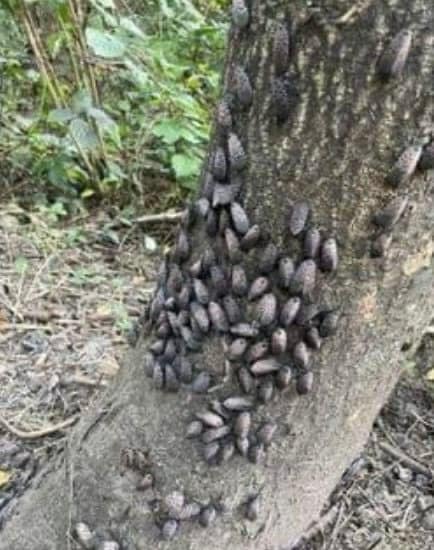Once they hatch, the nymphs are black with white spots, and as they grow older, they turn a bright reddish color with black borders and white dots.
When they reach maturity, lanternflies are about one inch long, with grayish forewings marked with black spots. Their underwings are red with black spots that are bordered with white.
They feed on plant sap by piercing plant tissues with their needle-like mouthparts. This feeding weakens plants and can lead to their death, especially in high numbers.
Impact on Ecosystems and Agriculture
Economic Damage: The spotted lanternfly can cause severe damage to fruit crops such as grapes, apples, and peaches, as well as hardwoods. The feeding activity weakens plants and can lead to significant yield losses.
Ecological Impact: Beyond agriculture, the lanternfly can disrupt local ecosystems. By feeding on a variety of plants, it can alter plant communities and affect the animals that depend on those plants.
Scrape and crush
Controlling and killing spotted lanternflies involves a combination of methods, given their ability to quickly spread and damage plants.
Here are some effective approaches to manage and eliminate these pests:
Egg Masses: Scrape off egg masses from surfaces like tree trunks, fences, or any outdoor objects. Next, place the mass in a sealed bag with alcohol or sanitizer and discard them in the trash.
Nymphs and Adults: Crush nymphs and adults when spotted. This can be done by hand, or foot, or smash it with a tool like a broom. Be sure to wear gloves to avoid direct contact.
If you’re in an area under quarantine for spotted lanternflies, follow all regulations to prevent spreading them to other areas.
Also, report sightings to local authorities or agricultural departments to aid in broader control efforts.
Please let us know about your experiences with these pesky creatures! And make sure you share this story so others know how destructive lanternflies are to our environment!
